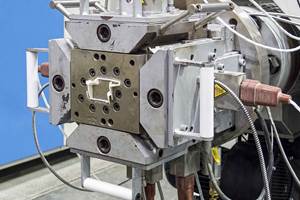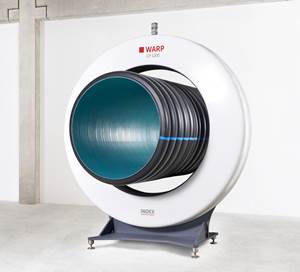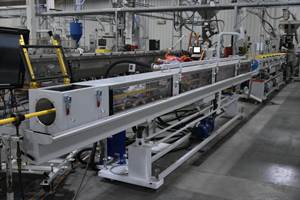NPE 2006 News Wrap-Up: Extrusion
NPE 2006 presented a bevy of features to make film, sheet, pipe, and profile extrusion more efficient.
NPE 2006 presented a bevy of features to make film, sheet, pipe, and profile extrusion more efficient. These included wider use of direct-drive, permanent-magnet, synchronous-torque motors, new automation devices, dies that speed color and product changes and reduce scrap, and more efficient ways to heat and cool.
Direct-drive motors
The most significant new technology to have a broad impact on extrusion is quiet, energy-efficient, and low-maintenance permanent-magnet, synchronous-torque motors. Motor builders Baumuller, Siemens, and KEB America displayed such “syn-torque” motors at NPE for the first time. An example of this nascent trend was shown by Macchi of Italy, which powered a blown film line entirely with such motors on three extruders and nip and chill rolls. It was a dramatic first extrusion demonstration in North America of these precise, silent, energy-efficient, and low-maintenance motors.
Macchi’s syn-torque line had one 7000-Nm Siemens motor and Knoedel/SKF thrust bearing on the 80-mm main extruder, two 5000-Nm torque motors on each of two 65-mm coextruders, and 200-Nm syn-torque motors driving nip and chill rolls, where they reportedly provide more precise tension control than do servo motors. The line was delivered after the show to a film processor in Pennsylvania for making high-quality lamination film. Macchi has three more film lines with gearless motors on order for the U.S. Davis-Standard showed its 3.5-in. EMDD extruder for the first time, sporting a 200-hp Siemens syn-torque motor with up to 7000 Nm of torque. It’s the first extruder built in North America with the new motor type. Siemens, which bought gear-box manufacturer Flender last year, is now able to deliver synchronous-torque motors with Flender thrust bearings, making conversion to direct drive easier.
Addex showed a 70-mm coextruder with a 94-hp Baumuller DST 315 synchronous-torque motor, which saves space in a crowded seven- or nine-layer line by having no gear box.
Windmoeller & Hoelscher re vealed that it has built its first extruder (4 in. diam.) with a synchronous-torque motor (from Siemens) for its lab in Germany.
Syn-torque motors from French supplier Leroy Somer also turned up at the show in a highly efficient “Nirvana” air compressor developed by Ingersoll-Rand four years ago. The motor is 15% more energy efficient than conventional compressor motors and far more reliable, “without pulleys, belts, couplings or bearings to replace,” says Ingersoll-Rand. The company, which patented the direct-drive approach of leading the shaft through the middle of the hollow motor, now produces 500 to 700 Nirvana compressors a month.
Reifenhauser, the first to commercialize extruders with synchronous torque motors in 2003, offers its REItorque extruders in a range of standard models from 25 to 100 mm diam. Their Siemens motors provide torque from 300 to 11,000 Nm. Reifenhauser says most of its new extruder orders specify REItorque motors, which are priced nearly comparable to a conventional motor plus gear box.
American Maplan showed a 75-mm, 34:1 sheet extruder using a four-motor direct drive from Knoedler. With a total of 342 hp, it’s the largest four-motor drive applied to an extruder.
Blown film news
Among several new ways to improve efficiency, Hosokawa Alpine American showed a crammer system to feed trim into a grooved-feed extruder. It starts with a standard edge-trim grinding system from sister company Hosokawa Polymer Systems, then adds fluff via a specially designed reservoir with a pre-blending auger that mixes the fluff with virgin pellets and conveys the blend to a special crammer screw, which feeds the mixture into the grooved feed throat of the extruder.
For barrier film, Alpine showed its new X-Series seven-layer die. The side-fed stack die eliminates port lines in film because the spirals are machined on the inside of the cylinder, not the outside. Ports are also round instead of half-round, providing more streamlined flow, which makes purging and color changes as fast as 15 min, Alpine says. The seven-layer die went to Alpine’s lab after the show for customer trials. It’s particularly advantageous for narrow-MWD materials, which are prone to port flow lines.
Brampton Engineering has sold its first Aquafrost blown film line in North America. The nine-layer, water-quenched line goes to Packall Packaging Inc. in Brampton, Ont. (Brampton has five other lines installed globally with five to 10 layers and two more nine-layer lines on order for China and Europe.) Aquafrost competes with blown PE barrier film with 1.5 to 2 times higher output.
W&H’s flexible, quick-change Multicool air ring was displayed in the U.S. for the first time. It converts from single- to dual-lip or “cloaked flow,” which is halfway between the two. Changing from one mode to another takes 10 to 30 min. The ring is available with or without auto-gauge control.
Reifenhauser also launched a new high-performance dual air ring, called REI2cool, with adjustable height and special IBC stabilizer. Not your ordinary dual-lip air ring, Reifenhauser’s new REI2cool unit is two separate rings, one mounted on the die and the other at an adjustable height below the collapsing cage. This system creates a round bubble neck instead of an oval neck between the two air rings to provide greater stability. Reifenhauser says it can also maximize throughput for a broad range of film products and blow-up ratios, whereas a dual-lip air ring typically is limited to high output of a narrow product range.
An auto-gauge-control system was new from A. Carnevalli & Cia Ltda. from Brazil, dubbed MultiPoint, with segmented heating elements in the die. It was shown for the first time running with a Kundig rotating thickness gauge.
W&H also developed the first automatic capability to change layflat width and layer ratios. Introduced six months ago, its “Easy Change” module is an advance on W&H’s Multinip hauloff. It combines PLC encoder-controlled cage positioning with integrated control of adjustable side guides, screw speeds, air ring, and IBC to make product changes much more quickly than an operator could otherwise. W&H has shipped 15, including several to the U.S.
Another new feature on W&H’s bubble cage is an exhaust system mounted at the bottom of the cage to remove paraffin wax and dust. W&H has sold a dozen since introducing it last fall and has several on order in the U.S. W&H also showed rubber-coated carbon-fiber rollers for the bubble cage, which are less expensive than PTFE-coated rollers.
Addex showed its first GBR (gauge-band randomizer) oscillating hauloff with a structural aluminum frame instead of steel. That makes it light enough to eliminate costly reinforcing of the tower to support the weight of the hauloff.
Macro Engineering & Technology has developed a new edge-guide system, said to be the only one that doesn’t move film using tension. Instead it uses a symmetrical cushion of air to slide the film as much as 12 in. in either direction. The tension-free edge guide should be commercially available this month.
In addition, W&H added a feature available on all winders to improve operator efficiency. A thin red line of laser light shows operators where to adjust for core alignment. It was shown on a new TX winder that winds up to 47-in.-diam. rolls vs. 31.5 in. for the older Filmatic T stacked turret winder.
News in thickness gauges
Two new non-nuclear thickness gauges were introduced at the show. Thermo Electron Inc. (formerly EGS Gauging) introduced its first thickness gauge using an LED array with gallium nitrite as a monochromatic, non-pulsing light source. It shines across the apex of the curve of a roll into a receiver, which measures the thickness of the shadow cast by the film passing over the roll. An inductive sensor mounted over the middle of the roll looks straight down and checks the relative position of the apex of the roll. Software calculates the difference between roll position and shadow thickness, giving a non-contact, true thickness measurement of a high-speed moving web.
EGS has 20 installations of the LED gauge, which was launched last year for foam and sheet applications from 200 to 6500 microns thick and up to 90 in. wide. The LED gauge costs about 10% more than a nuclear gauge and measures both clear and opaque film, though opaque gives a sharper shadow.
Betacontrol of America showed a new thickness gauge using an infrared camera to read film temperature and infer thickness. The device can be placed much closer to the die bolt than nuclear gauges, so response is faster. The first prototype is in beta testing at one location. So far it works for PE, PP, and PS, but hasn’t been tested yet for other materials. The goal is to adapt it to all commodity materials before commercializing it next March.
For blown film, Plast-Control demonstrated its non-contact C-Scan capacitance gauge for the first time in North America. It was shown at K 2004 in Germany on a C-frame. The O-frame demonstrated at NPE can be up to 3.2 meters wide for high-speed (20- to 30-sec) scans after the hauloff, where barrier film is cool enough to measure by capacitance. Non-contact capacitance doesn’t measure absolute thickness, but only relative profile, detecting thick and thin spots.
News in cast film & sheet
Cast film news at the show—from stretch film to PVC—included faster winding, faster cooling, faster everything. PTi Processing Technologies Inc. developed a quick-disconnect, plug-in version of its Trident Series extruders, which allows an operator to replace heater bands instead of requiring a maintenance technician.
An unusually efficient new barrel-heating and cooling system has also been commercialized, so far mainly in retrofits for cast film and sheet. Rex Materials Group manufactures and distributes them as Rex TCS (thermal control solution) under license from Insul-Vest. (Insul-Vest invented the technology and launched it at NPE 2003 under the name Insulwatt.) Rex TCS uses radiant heaters beneath ceramic-fiber insulation, so the heat transfers rapidly and goes almost entirely into the barrel. An air gap between the heaters and the barrel allows for a high-speed draft of air (over 6000 ft/min) for rapid cooling. Rex TCS heaters average 40% energy savings, RMG says, with savings up to 75%. Several large sheet processors, including Eaton (formerly St. Gobain), Plastipak, and Spartech, have converted some extruders to the new system, which fits any extruder from 3.5 to 8 in. screw diam. No extruder OEMs so far offer them.
Extrusion Dies Industries delivered a Contour die of record width for stretch film—a 5.5-meter Autoflex VI-R-HM 40 die with a nine-layer feedblock and custom-built splitting function for cleaning. The Contour die, introduced three years ago, shortens product changeover time from 40 min or more to 5 min or less, EDI says. The wider the die, the greater the savings.
Stretch-film winders are also getting more efficient. Davis-Standard Converting Systems developed a four-spindle surface winder with center assist for six-up machine-wrap or hand-wrap stretch-film rolls up to 120 in. wide. The new Black Magic S4 four-spindle winder has a 25-sec roll-to-roll cycle time vs. 47 sec for the two-spindle unit. The new model winds 800 rolls/hr or 15,000 rolls/day with automatic core loading from bins. It also handles either 2- or 3-in. cores where the earlier model only winds 3-in. cores.
In foam, Cincinnati Extrusion from Austria showed its Alpha extruder for the first time in the U.S. and added a new ICU chill-roll stack. The ICU (intensive cooling unit) calibrates overall thickness of up to 1.5-in. PVC foam board. The ICU can also vary the relative thickness of the solid surfaces.
Battenfeld Gloucester Engineering showed its newly redesigned Opticell foam sheet die for producing single or double PS or PE webs with no spider lines. It has removable inner and outer die lips and QuickGap on-the-fly adjustments to vary die diameter to extrude a range of web widths. The outside adjustment mechanism was stiffened to improve thickness uniformity across the entire sheet width.
Last fall, Buss Inc. delivered its first high-output (80-mm) Quantec kneader adapted for PVC calender feeding. A kneader for direct calender feeding is longer than general purpose kneaders for PVC mixing—with 15:1 L/D and vacuum venting toward the end of the barrel vs. 10:1 and vacuum degassing between the kneader and a second stage discharge extruder for the standard Quantec. (If a roll mill is used for degassing, then a 10:1 Quantec can be used to feed the roll mill.)
Pipe and profile news
In a joint effort with B&P Process Equipment (Saginaw, Mich.), Cincinnati Milacron developed its first corotating parallel twin-screw extruder, specifically for higher outputs of wood-plastic composite (WPC) profiles. B&P is building the machine, Milacron provides motors, drives and new generation Mosaic controls and will market it exclusively for WPC.
It extrudes up to 80% wood flour using a modified metering section, called Direct Extrusion Discharge, on the screw to build up enough pressure to pump through a shape die without a gear pump or second stage single-screw extruder. The new TE model comes in four diameters: 80 mm for 1000 lb/hr, 100 mm for 2000 lb/hr, 125 mm for 4000 lb/hr, and 160 mm for 8000 lb/hr—which will be the highest-output WPC extruder in the world, Milacron says. B&P has built three of the 80-mm R&D size for trials and is building the first commercial-scale TP 125 now.
Counter-rotating parallel twin-screws have been built for up to 4000 lb/hr of WPC and conical twins for up to 2600 lb/hr.
Two companies showed more efficient alternatives to a basket die for improved melt distribution and faster color changes in large pipe and profiles. American Maplan showed a VSI lattice/basket die for polyolefin pipe for the first time in the U.S. The VSI die is a combination of a spiral and basket, which is shorter and generates lower pressure and temperature than a basket die. It was introduced in late 2004 by Maplan’s sister company, Battenfeld Extrusionstechnik in Germany, which has built 30 units. Last year, Maplan began offering VSI dies in smaller diameters for the same price as a spiral mandrel.
Guill Tool & Engineering is building spiral-mandrel dies in larger sizes to replace basket dies. Guill builds spiral tubing dies up to 10 in. diam. and has designed one for 15 in. with eight entry channels, which Guill says will be the largest spiral tubing die on the market.
Maillefer SA introduced a novel system to make PEX-a pipe by crosslinking it in an infrared oven in-line with extrusion. PEX-b pipe is crosslinked off-line in a hot water bath. The organoleptics of oven-cured pipe are better, Maillefer says. Residence time and line speed can be controlled by turning oven elements on or off. Maillefer has sold the first two lines in Europe.
Maillefer is also newly offering its turnkey PEX-aluminum-PEX composite pipe production systems in the U.S. with full automation.
Corma is building the world’s biggest corrugated pipe tooling—84-in. diam. with output of 3000 to 3500 lb/hr. Headed for the Middle East, the corrugator system is fully enclosed and air-conditioned inside, which increases output.
Frankische Rohrwerke in Germany just completed its first dual-wall corrugated tooling for 60-in.-diam. pipe a few days before NPE. The first Model FDC XXL was delivered to a European customer. Previously, the company’s largest corrugated tooling was 30 in. diam.
Unicor is also building its first extrusion system for 60-in.-diam., dual-wall corrugated pipe. It will be delivered next year to a customer in Indiana. It will make 20-ft sections. Up to now, Unicor’s largest dual-wall pipe tooling made up to 48-in.-diam. pipe.
Omipa Extrusion Machinery showed a complex die for a hollow profile for PC panels, which combines a seven- to nine-layer barrier structure with a hollow honeycomb profile up to 42 mm thick with reinforcing X’s between the surface layers.
Pitac International Co. from Taiwan showed a new profile die for coextruding foamed PS inside rigid PVC for construction panels. The PS foam core provides rigidity and thermal and sound insulation. Pitac developed the die to coextrude rigid PVC at 212 to 239 F over PS at 302 F (foamed with butane). Pitac has five lines running in Dubai since 2003, making flat structural panels and tongue-and-groove boards for temporary housing. Coextrusion saves the labor of inserting foam into the profiles and makes a stronger product.
Related Content
Is Your Die Flow Changing Despite Following All the Correct Formulas?
Maybe the problem is that you're starting up with a dry die. Here are tips to solve this issue.
Read MoreZeus Expands Catheter Capacity, Adds Minnesota Plant
State-of-the-art facility said to open this summer.
Read MoreRadar-Based Wall-Thickness Sensor
Measurement units include an array of these sensors positioned around the circumference of the pipe, which can be placed in multiple locations on an extrusion line.
Read MoreTeel Adding Capacity, Bumping Pay for Hourly Workers
Teel growing to meet market demand, meaning increased employment opportunities for the area.
Read MoreRead Next
Advanced Recycling: Beyond Pyrolysis
Consumer-product brand owners increasingly see advanced chemical recycling as a necessary complement to mechanical recycling if they are to meet ambitious goals for a circular economy in the next decade. Dozens of technology providers are developing new technologies to overcome the limitations of existing pyrolysis methods and to commercialize various alternative approaches to chemical recycling of plastics.
Read MorePeople 4.0 – How to Get Buy-In from Your Staff for Industry 4.0 Systems
Implementing a production monitoring system as the foundation of a ‘smart factory’ is about integrating people with new technology as much as it is about integrating machines and computers. Here are tips from a company that has gone through the process.
Read MoreTroubleshooting Screw and Barrel Wear in Extrusion
Extruder screws and barrels will wear over time. If you are seeing a reduction in specific rate and higher discharge temperatures, wear is the likely culprit.
Read More



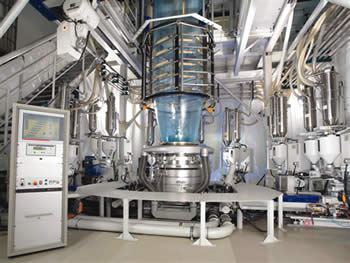
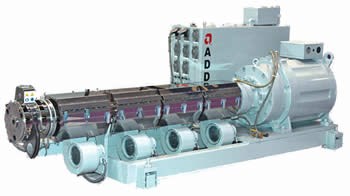
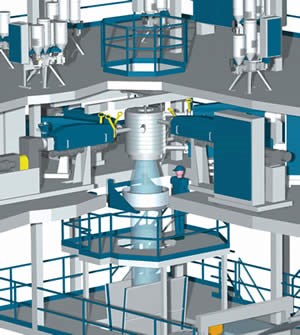

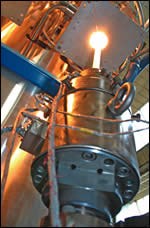

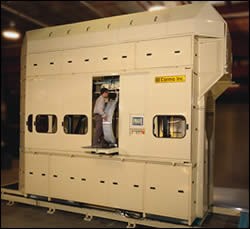














.png;maxWidth=300;quality=90)





